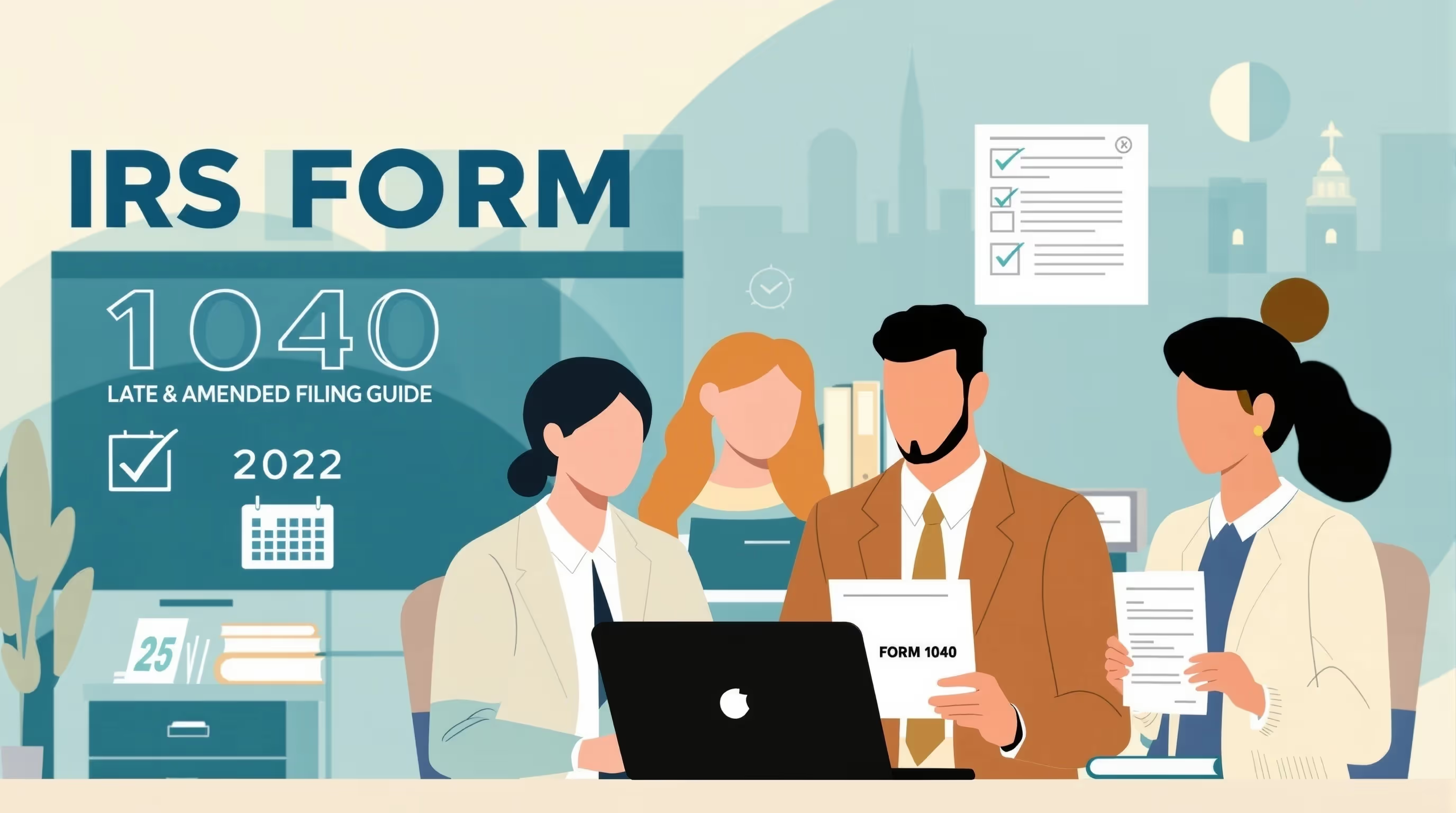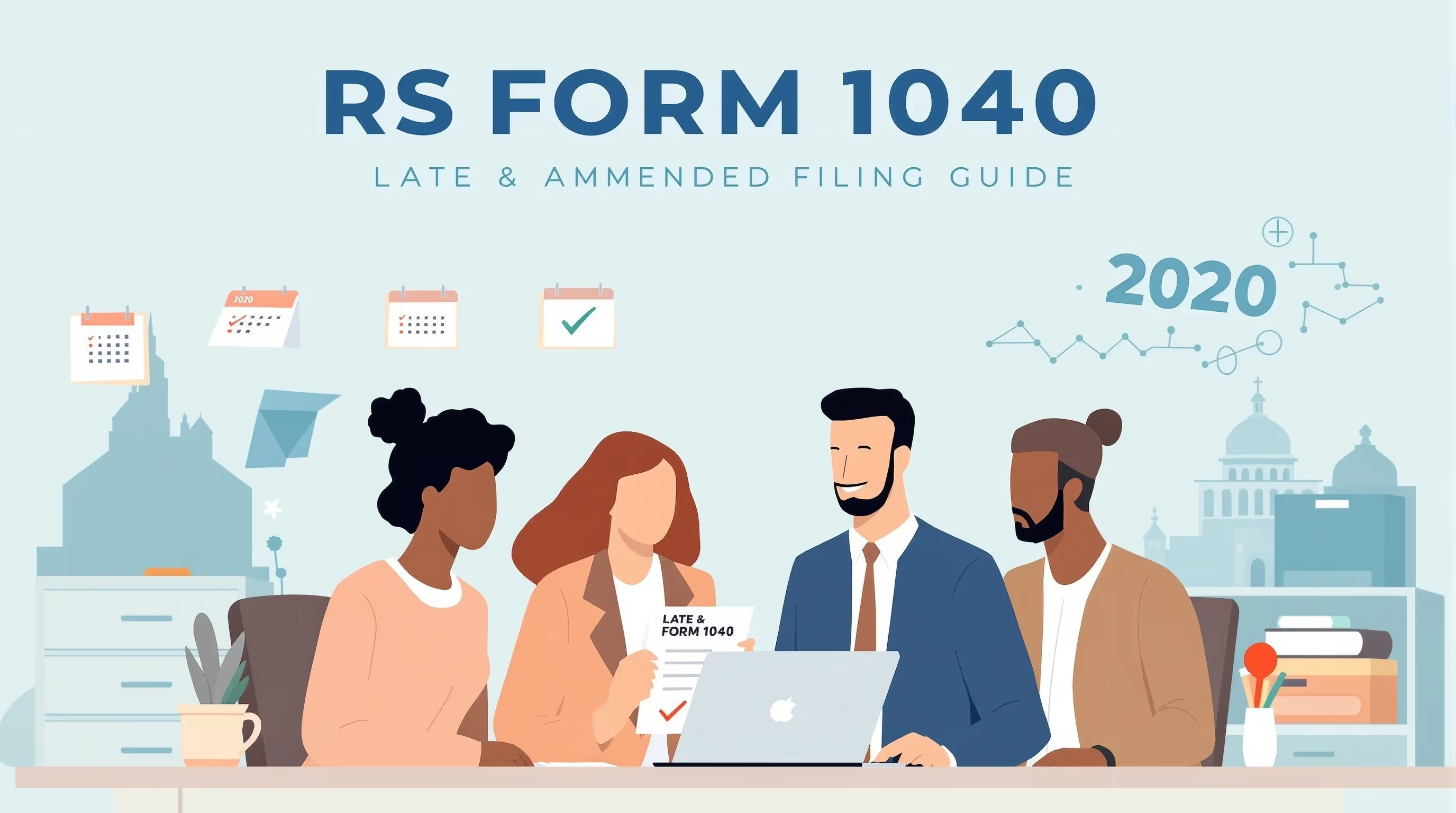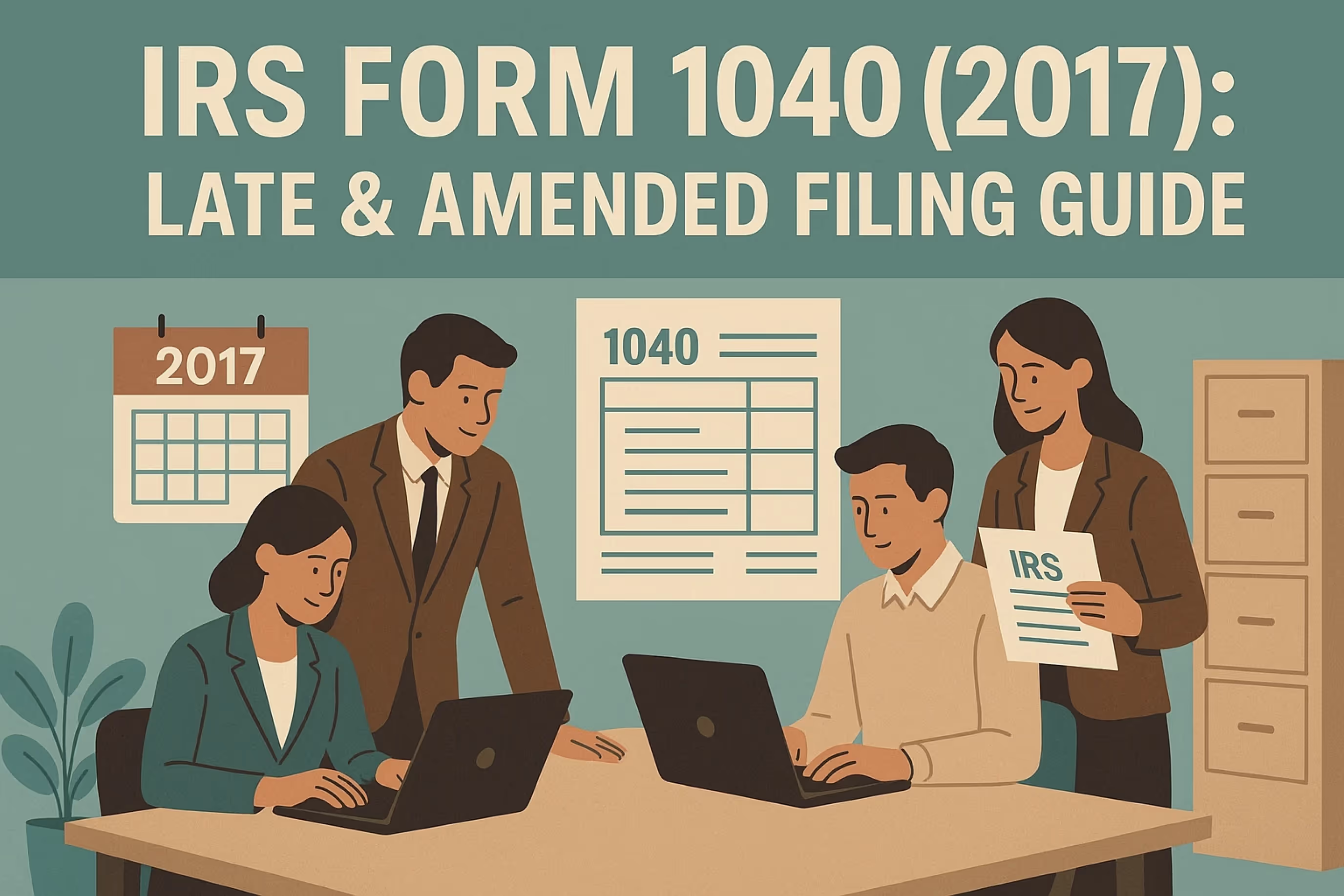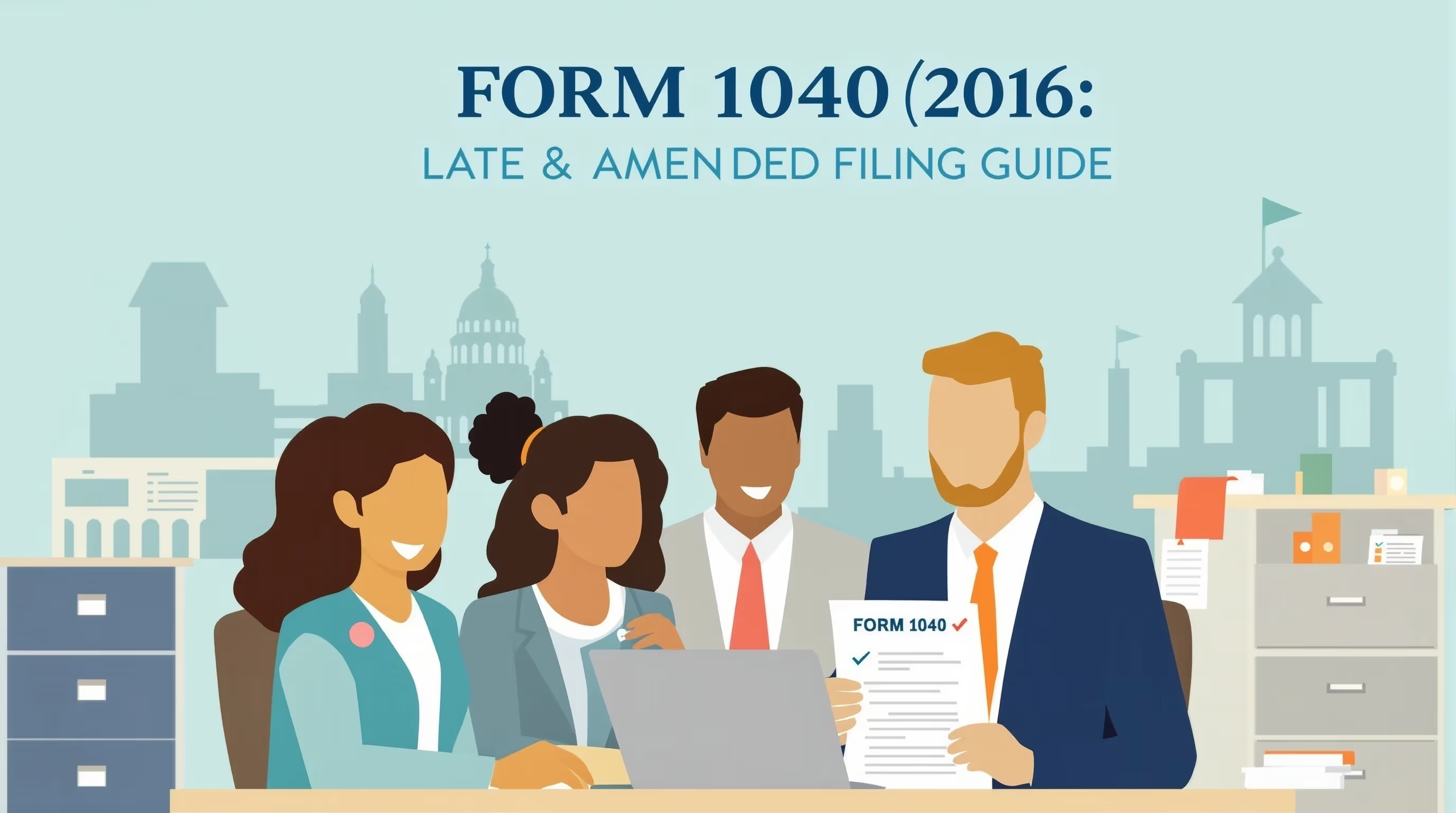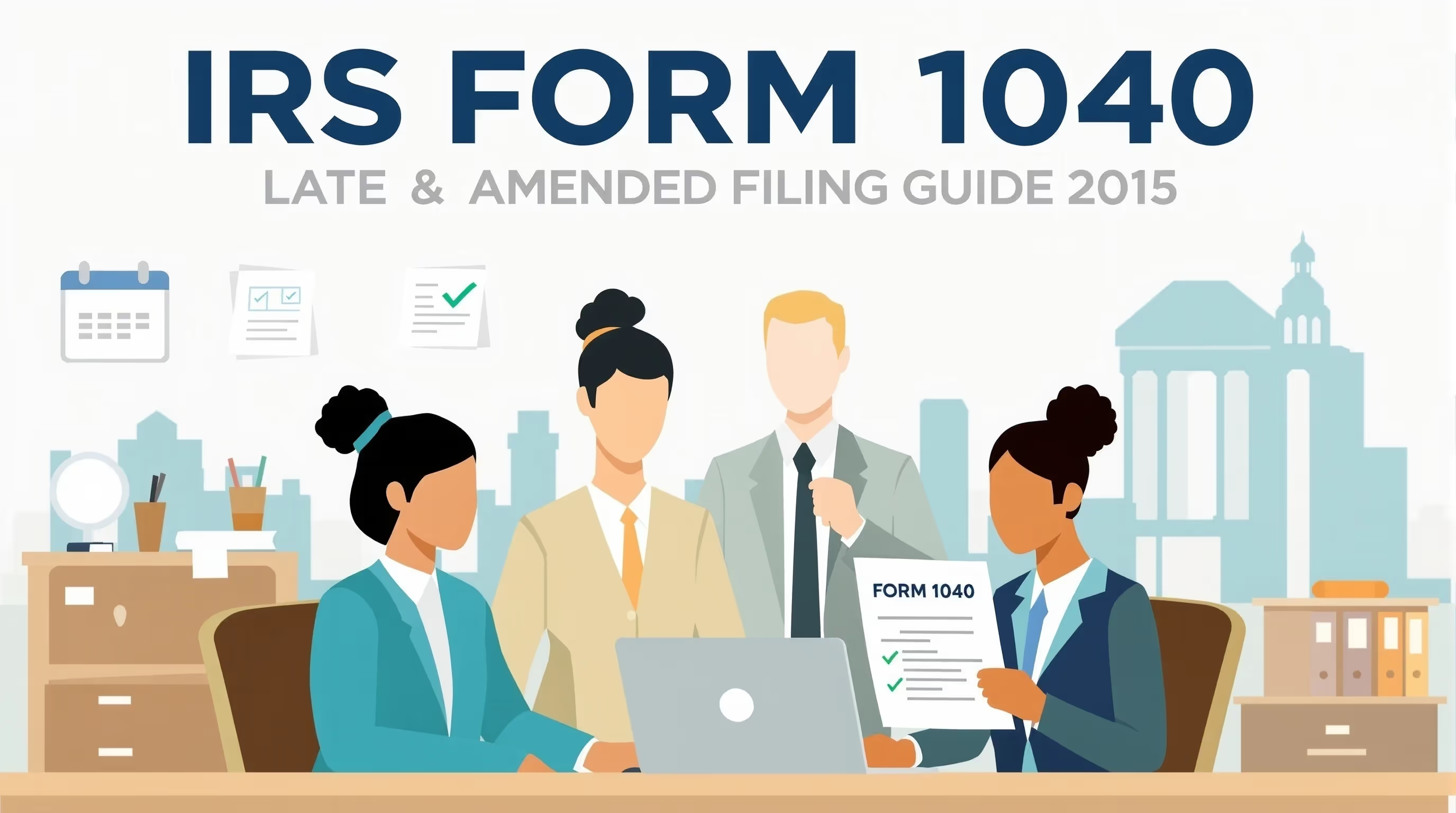2010 Federal Tax Filing Guide for Seniors (65+)
Filing a federal income tax return can be challenging for seniors, especially when reviewing rules for a specific tax year. This guide focuses on Tax Year 2010, when taxpayers aged 65 and older needed to understand which tax forms to use, what deductions and credits applied, and how the Internal Revenue Service processed returns. The guide helps readers understand the requirements that shaped the 2010 filing season by walking through the available forms and senior-specific considerations.
For seniors in 2010, selecting the correct form was the first important step. The main form for an annual income tax return was Form 1040, with simplified options such as Form 1040A and Form 1040EZ available in limited situations. Each form had different requirements for reporting income, claiming deductions, and calculating tax liability. While the larger-font Form 1040-SR was not yet introduced, many rules regarding standard deductions, Social Security income, and retirement distributions were already in place. Seniors also had access to specific adjustments and credits that reduced taxable income and helped lower overall taxes owed.
Because tax filing in 2010 required careful attention to details, this guide also highlights common mistakes to avoid and explains when to seek assistance from a tax professional. It outlines changes to deductions, credits, and payment rules that applied then, while also noting where estimated tax payments and other obligations could affect seniors. The goal is to provide a clear and practical resource for anyone reviewing prior-year requirements, ensuring that the steps to file an accurate and complete return are easy to follow.
Overview of Federal Tax Forms for 2010
For Tax Year 2010, the Internal Revenue Service provided three primary tax forms that seniors could use to file an individual income tax return. Each form had specific income limits, deductions, and filing status requirements. Choosing the correct form was essential for reporting income accurately and calculating the proper tax liability.
The three primary federal forms available in 2010
- Form 1040EZ
- This form was designed for the simplest tax situations.
- It could only be used if the taxable income was under $100,000.
- It allowed no dependents, limited income types, and no itemizing deductions.
- This form was designed for the simplest tax situations.
- Form 1040A
- This form offered more flexibility for taxpayers with moderate complexity.
- It was available if the income was under $100,000.
- It allowed certain credits, such as the child tax credit, and adjustments, like the student loan interest deduction.
- This form offered more flexibility for taxpayers with moderate complexity.
- Form 1040
- This was the primary form used for most federal income tax returns.
- It had no income limit and supported all types of income, including business income, unemployment compensation, gambling winnings, and rental real estate.
- It allowed taxpayers to itemize deductions such as mortgage interest, charitable contributions, and medical and dental expenses.
- This was the primary form used for most federal income tax returns.
Although seniors today may be familiar with Form 1040-SR, this larger-font option was unavailable in 2010. Seniors instead used the standard Form 1040 or, if eligible, the shorter versions. Understanding these options helped taxpayers report income correctly and ensured that deductions, credits, and additional forms were handled in compliance with IRS requirements.
Key Tax Law Changes for 2010
The 2010 tax year introduced several updates that affected how seniors filed an annual income tax return. These changes shaped deductions, credits, and income reporting requirements, and they were important for taxpayers to understand before completing any IRS form.
Standard deduction amounts for 2010
- A single filer could claim $5,700, with an additional $1,400 if age 65 or older.
- Married taxpayers filing jointly could claim $11,400, with an additional $1,100 for each spouse age 65 or older.
- Married taxpayers filing separately could claim $5,700, with an additional $1,100 if age 65 or older.
- A head of household could claim $8,400, with an additional $1,400 if age 65 or older.
Other updates for 2010
- The personal exemption for each taxpayer was set at $3,650.
- Contribution limits for traditional and Roth IRAs were $5,000 for individuals under 50 and $6,000 for those 50 and older.
- Income limits for Roth IRA conversions were removed, allowing all taxpayers to convert traditional IRAs regardless of income.
- The Social Security wage base, which determined the income subject to Social Security tax, was $106,800.
Credits and deductions
- The Making Work Pay Credit provided up to $400 for single filers and $800 for married couples filing jointly.
- The American Opportunity Tax Credit remained available to help offset the cost of higher education expenses.
- The student loan interest deduction could reduce taxable income for qualified taxpayers paying education loans.
- Seniors could also claim deductions for medical and dental expenses, mortgage interest, charitable contributions, theft losses, and educator expenses if they itemized.
In 2010, refundable and non-refundable credits were applied, including foreign tax credits, child tax credits, and additional credits for certain dependents.
These updates directly influenced how seniors calculated their taxable income and determined their tax liability. Understanding which credits and deductions applied was key to accurate tax filing.
How Seniors Should Choose the Right Tax Form?
In 2010, seniors had to choose the correct IRS form carefully to ensure that all income, deductions, and credits were reported correctly. This decision affected the length of the tax filing process and whether additional forms or schedules were required.
Key questions for form selection
- Taxpayers should determine their total taxable income for the year, which directly affects which forms are eligible for use.
- Seniors needed to identify the types of income they had to report, such as Social Security benefits, pensions, unemployment compensation, or business income.
- Choosing the correct filing status, such as single, married filing jointly, or head of household, was essential for selecting the proper form.
- Taxpayers must decide whether to take the standard deduction or begin itemizing deductions such as mortgage interest and medical expenses.
- Seniors had to consider whether additional forms or schedules, such as Schedule C for self-employment income or Schedule E for rental real estate, would be required.
When to use each form
- Form 1040EZ was only appropriate for simple tax situations, such as reporting wages and limited interest income. Most seniors did not qualify because the form excluded Social Security income and retirement distributions.
- Form 1040A was suitable for seniors with moderate complexity, such as those reporting pensions, Social Security, or dividends. It also allowed certain credits, such as the child tax credit, and deductions, such as the student loan interest deduction, but it did not allow itemizing.
- Form 1040 was required for seniors with more complex situations, including those reporting business income, gambling winnings, rental real estate, or pass-through entities. It also allowed taxpayers to itemize deductions for medical and dental expenses, charitable contributions, mortgage interest, and theft losses.
By reviewing income sources, filing status, and deduction options, seniors could determine which form best matched their situation and avoid errors that might increase their tax liability.
Filing Instructions by Form Type
The process for completing a 2010 individual income tax return depended on which form a senior used. Each IRS form had its requirements for reporting income, claiming deductions, and calculating total taxes owed.
Filing with Form 1040EZ
- Seniors could only use Form 1040EZ if they had simple income situations, such as wages and interest under $1,500.
- This form required reporting income and subtracting the standard deduction to calculate taxable income.
- Because the form excluded Social Security benefits and retirement distributions, most seniors were not eligible to use it.
Filing with Form 1040A
- Form 1040A allowed seniors to report wages, interest, dividends, unemployment compensation, Social Security benefits, pensions, and annuities.
- Seniors could claim necessary credits, including the child tax credit, education credits, and other additional credits for dependents.
- The form supported above-the-line deductions, such as the student loan interest deduction, but did not allow itemizing deductions.
- This form worked well for taxpayers with moderate filing needs who wanted a shorter form than the standard 1040.
Filing with Form 1040
- Seniors who had complex income situations were required to file using Form 1040.
- This form allowed reporting of all income sources, including business income, rental real estate, self-employment income, gambling winnings, and sales of business property.
- Seniors could itemize deductions, including mortgage interest, medical and dental expenses, charitable contributions, and theft losses.
- The form supported attaching schedules, such as Schedule C for self-employment and Schedule D for capital gains and losses.
- Because it allowed the most deductions and credits, this was the primary form for seniors filing in 2010.
Form 1040 was the most widely used form among seniors during the 2010 tax year, since it provided flexibility for reporting different income types and claiming deductions. This ensured taxpayers could comply fully with IRS requirements while taking advantage of available credits and deductions.
Filing Options in 2010: E-File vs Paper
In 2010, seniors had the choice of filing electronically or submitting a paper return. Each method had advantages, and the decision often depended on personal preference, comfort with technology, and the complexity of the individual income tax return.
Benefits of e-filing
- Seniors who used electronic filing received their refunds much faster, often within two to three weeks of submission.
- E-filing provided an immediate confirmation from the IRS, which reassured taxpayers that their return had been accepted.
- Most e-filing software includes built-in error checks, which reduce mistakes that could cause delays or trigger IRS notices.
- Refunds could be deposited directly into a checking or savings account, giving seniors a quicker and safer way to access money owed to them.
- Free File was available for taxpayers with lower income levels, while others could use commercial software or work with a tax professional who submitted returns electronically.
Paper filing option
- Seniors who preferred a traditional approach could obtain paper forms by downloading them from IRS.gov, requesting them by phone, or visiting local IRS offices.
- Paper returns are required. Before mailing, all supporting forms, such as W-2s, 1099s, and additional schedules, must be attached.
- Every return had to be signed and dated, and married couples filing jointly had to provide signatures from both spouses.
- Refunds for paper-filed returns typically took six to eight weeks, making this method considerably slower than e-filing.
For 2010, the deadline for submitting returns was April 18, 2011, with an extension available until October 17, 2011. Choosing the correct filing option helped seniors balance convenience with personal comfort and ensured that refunds or payments were processed on time.
Paying Taxes and Managing Balances Due
Seniors who owed federal income tax for 2010 had multiple ways to pay their balance. Selecting a payment method that fits their circumstances helped them avoid unnecessary penalties and interest.
Payment methods available in 2010
- Taxpayers could pay by check or money order, making them payable to the United States Treasury and mailing them along with the return.
- The Electronic Federal Tax Payment System (EFTPS) gave seniors a secure way to make online payments directly from a bank account.
- Seniors also had the option to pay with a credit or debit card through IRS-authorized processors, although this method included a small processing fee.
- Those who filed electronically could arrange for direct debit, which allowed the IRS to withdraw the balance owed directly from a checking or savings account.
Options if unable to pay in full
- Seniors who could not pay the full balance at once could request an installment agreement, which allowed them to make smaller payments over time.
- Taxpayers who met specific requirements could apply for an offer in compromise, which allowed them to settle their balance for less than the full amount owed.
- In cases of financial hardship, the IRS could temporarily delay collection, but penalties and interest continued to add to the balance during the delay.
Even if a senior could not pay the full amount owed, filing the return on time was critical. Doing so helped avoid failure-to-file penalties and allowed the taxpayer to set up an arrangement with the IRS that matched their financial situation.
Required Schedules and Attachments
Completing a 2010 tax return often required attaching additional schedules or forms. These documents provided details about income, deductions, and credits so the IRS could accurately determine tax liability.
Common schedules for 2010
- Seniors who itemized deductions, including mortgage interest, medical and dental expenses, and charitable contributions, used Schedule A.
- Schedule B was required when interest and dividend income exceeded $1,500 or when taxpayers had accounts with foreign institutions.
- Schedule D was necessary for reporting capital gains and losses from selling investments or real property.
- Schedule E applies when reporting income from rental real estate, royalties, or pass-through entities such as partnerships.
- Schedule C was used by self-employed taxpayers to report business income and expenses related to operating a trade or small business.
Forms often used by seniors.
- Form SSA-1099 reports the amount of Social Security benefits received during the year.
- Form 1099-R was used to report distributions from qualified retirement plans, pensions, and annuities.
- Form 1099-INT provided details about taxable interest income earned during the year.
- Form 1099-DIV documents dividends from stocks, mutual funds, and other investments.
By attaching the correct schedules and supporting forms, seniors ensured that their individual income tax returns were accurate and complete. Missing schedules could result in IRS delays, notices, or adjustments to the taxpayer’s balance due or refund.
Common Filing Mistakes Seniors Should Avoid
Seniors filing a federal income tax return for 2010 often faced challenges that led to errors. Avoiding these mistakes helped ensure accurate filing and reduced the risk of IRS notices or penalties.
Mathematical and clerical errors
- Many seniors made basic arithmetic mistakes, such as incorrectly adding or subtracting income and deductions.
- Entering the wrong Social Security number or leaving it blank caused delays and sometimes required resubmission of the tax return.
- Forgetting to claim the additional standard deduction available for taxpayers age 65 or older led to a higher taxable income than necessary.
- Missing signatures was a standard error, especially for married couples filing jointly, since both spouses needed to sign the return.
Income reporting mistakes
- Some seniors failed to report all Social Security benefits, believing these payments were tax-free when, in many cases, they were partly taxable.
- Pension distributions and withdrawals from qualified retirement plans were sometimes misreported, leading to mismatched records with IRS Form 1099-R.
- Seniors occasionally forgot to report interest or dividend income listed on Form 1099-INT or Form 1099-DIV.
- Those subject to required minimum distributions (RMDs) sometimes failed to report the amounts taken from retirement accounts, which created additional tax liability.
Deduction and credit errors
- Some taxpayers claimed the wrong standard deduction, either forgetting the higher amount for age 65 or misreporting their filing status.
- Errors occurred when itemizing deductions, such as failing to include medical and dental expenses or charitable contributions.
- Seniors sometimes claimed refundable or non-refundable credits for which they were not eligible, resulting in IRS adjustments.
By carefully reviewing each form and double-checking numbers, seniors could avoid these mistakes and reduce the chance of problems with the IRS.
Retirement-Specific Considerations
Retirement introduced unique tax issues for seniors filing in 2010. Understanding how these rules applied helped retirees report income correctly and manage tax liability.
Social Security benefit taxation
- Social Security benefits were partly taxable depending on total income, including adjusted gross income, nontaxable interest, and half of the benefits.
- For single filers, benefits became taxable when combined income exceeded $25,000.
- Benefits became taxable for married couples filing jointly when combined income exceeded $32,000.
Required minimum distributions (RMDs)
- Seniors who turned 70½ in 2010 were required to take RMDs from traditional IRAs and qualified retirement plans.
- The amount of the RMD was based on IRS life expectancy tables, which calculated how much needed to be withdrawn each year.
- The amount of an RMD was taxable and had to be reported on Form 1040.
- Seniors could request withholding on RMDs to avoid owing additional tax at the end of the year.
Medicare considerations
- A senior’s federal income tax return could affect Medicare premiums through income-related monthly adjustment amounts (IRMAA).
- Higher-income taxpayers paid larger Medicare Part B premiums, based on income reported two years earlier.
- Seniors had the right to appeal if their income had dropped due to retirement, the death of a spouse, or other significant life events.
Estimated tax payments in retirement
- Retirees often needed to make estimated tax payments if they expected to owe $1,000 or more in taxes.
- Seniors could meet safe harbor rules by paying 100% of the prior year’s tax liability or 110% if their adjusted gross income exceeded $150,000.
- Estimated tax payments were due quarterly, with deadlines in April, June, September, and January.
By paying attention to these retirement-specific issues, seniors could avoid unexpected bills and ensure compliance with IRS requirements.
First-Time Senior Filer Tips
Seniors filing for the first time after turning 65 often need extra guidance to understand their new filing obligations. Careful preparation made the process smoother and reduced the risk of costly mistakes.
Preparation checklist
- Before starting a return, seniors needed to gather all tax documents, including W-2s, 1099s, and Social Security statements.
- Locating a prior year's tax return helped compare and ensure the consistent reporting of income.
- Calculating the standard deduction, including the additional amount available for those age 65 or older, was an important step.
- Determining filing status, such as single, head of household, or married filing jointly, helped establish which rules applied.
- Reviewing income thresholds for Social Security taxation ensured benefits were reported correctly.
Record-keeping and documentation
- Seniors were encouraged to create a tax file to store all forms and receipts in one place.
- Making copies of the return and attachments provided backup in case the IRS requested additional information.
- Tracking important filing dates reduced the risk of missing deadlines for returns or estimated tax payments.
- Retaining records for at least three years was important, since the IRS could request them during an audit or review.
Resources available to seniors
- Volunteer Income Tax Assistance (VITA) programs provided free help for eligible seniors.
- The Tax Counseling for the Elderly (TCE) program offered specialized assistance to taxpayers age 60 and older.
- IRS Taxpayer Assistance Centers provided in-person support for filing questions and payment issues.
- The IRS website and toll-free number gave seniors access to forms, instructions, and guidance on tax filing.
By following these tips, seniors filing for the first time after age 65 could complete an accurate return, claim all eligible credits and deductions, and feel confident about their tax filing responsibilities.
Frequently Asked Questions
Do seniors need to file a federal income tax return if Social Security is their only income?
Seniors who only received Social Security during the 2010 tax year often did not need to file an annual income tax return. However, filing was recommended to claim a refund if they had taxes withheld, unemployment compensation, or other payments during the year. The Internal Revenue Service also required filing if the combined income pushed part of Social Security into taxable income.
Can seniors claim the student loan interest deduction or child tax credit in 2010?
Yes, the student loan interest deduction and the child tax credit were available to eligible taxpayers in 2010. Depending on circumstances, these credits and deductions were considered above-the-line deductions or refundable credits. Seniors filing jointly with dependents or those paying qualified education expenses could claim these benefits to reduce taxable income and overall tax liability on their federal income tax return.
How should seniors decide whether to itemize deductions or use the standard deduction?
Seniors needed to compare the standard deduction, which included an additional amount for taxpayers age 65 or older, with total itemizing deductions. Itemizing deductions could include mortgage interest, charitable contributions, theft losses, and medical and dental expenses. If the total exceeded the standard deduction, itemizing provided a greater tax benefit. The decision directly influenced taxable income, credits, and the final balance owed or refunded.
What types of income must seniors report on Form 1040?
Seniors filing Form 1040 were required to report income from multiple sources. This included Social Security benefits, pensions, annuities, business income, rental real estate, unemployment compensation, gambling winnings, and business or real property sales. Interest and dividends had to be reported on the proper schedules. At the same time, self-employment income was included on Schedule C. Reporting income accurately was essential to avoid additional tax or IRS penalties.
Do seniors still need Form 1040-SR for Tax Year 2010?
No, Form 1040-SR was introduced for later tax years and was unavailable in 2010. If they qualified, seniors in the 2010 calendar year had to use the main form, Form 1040, or its shorter versions. While Form 1040-SR later offered larger font and clearer formatting, seniors in previous years relied on standard tax forms and the instructions provided by the Internal Revenue Service for accurate filing.










